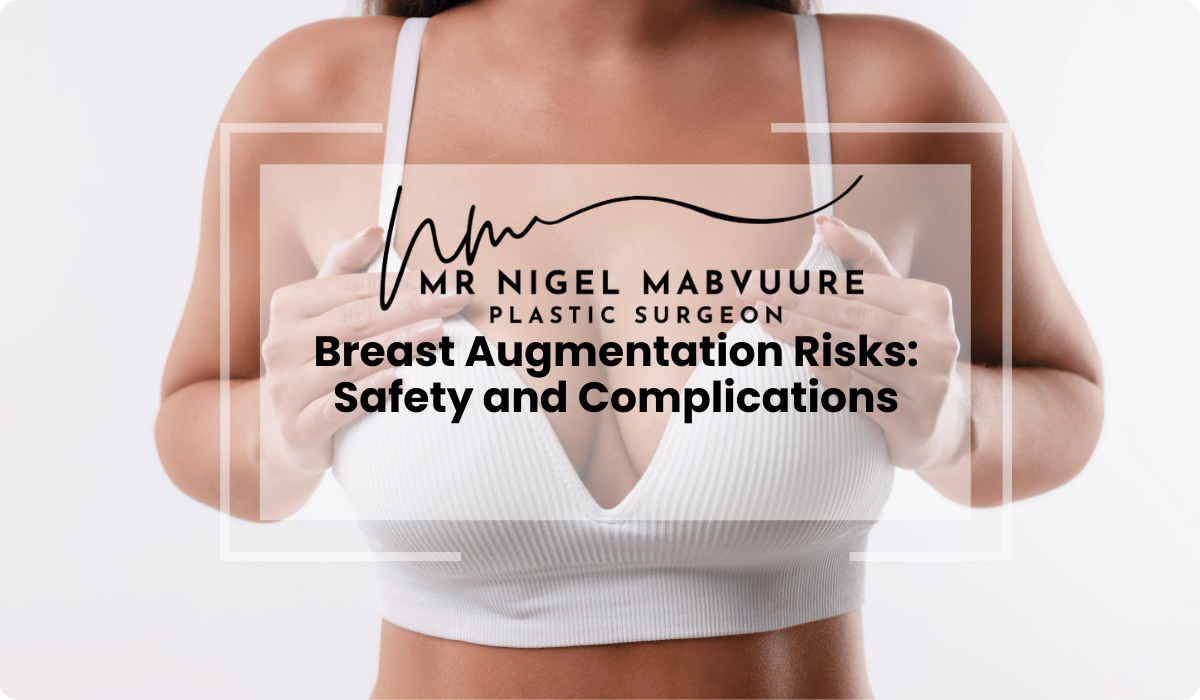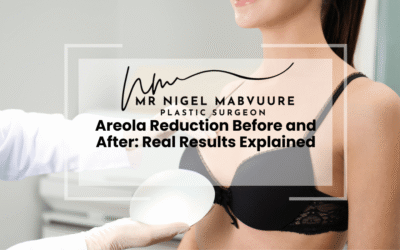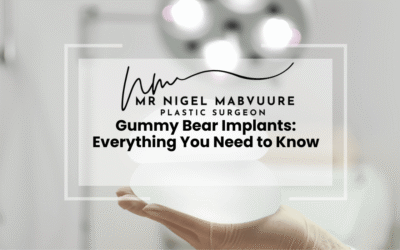Essential Safety Considerations for Breast Augmentation Patients
- Realistic Expectations: While breast augmentation has high satisfaction rates, all surgical procedures carry risks including infection, sensation changes, and aesthetic complications.
- Serious Complications Awareness: Though rare, patients should understand potential serious issues like BIA-ALCL (associated with textured implants) and possible systemic symptoms sometimes called “breast implant illness.”
- Capsular Contracture: This common complication affects 10-15% of patients and may require surgical correction if severe. Submuscular placement and modern surgical techniques help reduce risk.
- Implant Lifespan: Breast implants are not lifetime devices, with approximately 20% of women requiring revision within 8-10 years. Budget and plan for potential future surgeries.
- Monitoring Requirements: Regular self-examinations and appropriate imaging (MRI or ultrasound) are recommended to detect potential silent ruptures in silicone implants.
- Surgeon Selection: Choose board-certified plastic surgeons with specific expertise in breast augmentation and a willingness to discuss both benefits and potential complications.
- Recovery Vigilance: During recovery, promptly report concerning symptoms like increasing pain after the third day, unusual swelling, fever, or incision problems to your surgical team.
Table of Contents
- Understanding Common Breast Augmentation Risks
- What Are the Most Serious Breast Implant Complications?
- Capsular Contracture: Causes, Prevention, and Treatment
- Implant Rupture and Leakage: Signs and Solutions
- Long-Term Safety Concerns with Breast Implants
- Reducing Breast Augmentation Side Effects: Best Practices
- Recovery Complications: What Patients Should Monitor
- Making Informed Decisions About Breast Surgery Safety
Understanding Common Breast Augmentation Risks
Breast augmentation remains one of the most popular cosmetic procedures worldwide, but like all surgical interventions, it carries inherent risks. Understanding these potential complications is essential for anyone considering this transformative surgery.
The most common breast augmentation risks include infection, bleeding, changes in nipple or breast sensation, and poor scarring. Whilst modern surgical techniques have significantly reduced these occurrences, they remain important considerations. Infections typically present within the first few weeks post-surgery with symptoms like fever, unusual swelling, redness, and increased pain. Prompt medical intervention with antibiotics can typically resolve most infection cases, though severe instances may require implant removal.
Changes in sensation affect approximately 15% of patients, manifesting as either increased sensitivity or numbness in the nipple or surrounding breast tissue. These sensory changes are often temporary, resolving within 6-12 months as nerve pathways heal, though permanent alterations can occur in some cases.
Aesthetic complications like implant malposition, visible rippling, or asymmetry may develop, potentially necessitating revision surgery. These issues occur more frequently with implants placed above the muscle (subglandular placement) or in patients with minimal existing breast tissue.
It’s worth noting that whilst these complications sound concerning, the majority of patients experience uneventful recoveries with high satisfaction rates. Working with a board-certified plastic surgeon and following all pre- and post-operative instructions significantly minimises these risks.
What Are the Most Serious Breast Implant Complications?
Whilst most breast augmentation procedures proceed without significant issues, several serious complications warrant careful consideration. These rare but significant breast implant problems can have substantial health implications and often require additional surgical intervention.
Anaplastic Large Cell Lymphoma (BIA-ALCL) represents perhaps the most serious potential complication. This rare type of non-Hodgkin’s lymphoma has been associated primarily with textured implants. The UK Medicines and Healthcare products Regulatory Agency (MHRA) reports the risk at approximately 1 in 24,000 for textured implants. Symptoms typically include persistent swelling or a mass in the breast, often occurring years after implantation. When detected early, BIA-ALCL is highly treatable through implant removal and capsulectomy.
Systemic symptoms sometimes referred to as “breast implant illness” (BII) represent another serious concern. Though not officially recognised as a medical diagnosis, many women report experiencing fatigue, joint pain, cognitive difficulties, and autoimmune-like symptoms which they attribute to their implants. Research is ongoing to better understand these reported symptoms and their potential relationship to breast implants.
Severe capsular contracture (Baker Grade IV) can cause significant deformity, pain, and hardening of the breast. This condition not only affects aesthetic outcomes but can significantly impact quality of life, sometimes necessitating implant removal.
Double capsule formation and late seroma development (fluid collection occurring more than a year after surgery) are additional serious complications requiring surgical intervention. These issues have been associated more frequently with certain textured implant types.
Whilst these serious complications remain relatively uncommon, their potential impact underscores the importance of thorough pre-surgical counselling and ongoing follow-up care for all breast augmentation patients.
Capsular Contracture: Causes, Prevention, and Treatment
Capsular contracture remains one of the most common and challenging breast implant complications, occurring when the natural scar tissue that forms around an implant becomes unusually thick and tight. This condition affects approximately 10-15% of breast augmentation patients, though rates vary significantly based on surgical technique and implant type.
The exact causes of capsular contracture aren’t fully understood, but several contributing factors have been identified. Bacterial contamination (subclinical infection) during surgery appears to play a significant role, as does bleeding or haematoma formation. Genetic predisposition may also influence which patients develop this condition. Silicone implant rupture or gel bleed can trigger contracture, as can radiation therapy to the breast area.
Prevention strategies have evolved significantly over the past decade. Surgeons now employ the “no-touch” or “minimal-touch” technique, using specialised funnels for implant insertion to minimise contamination. Antimicrobial irrigation of the breast pocket and prophylactic antibiotics have become standard practice. Submuscular placement of implants (beneath the chest muscle) appears to reduce contracture risk compared to subglandular positioning.
For patients experiencing early signs of contracture, non-surgical interventions may include ultrasound therapy, massage techniques, and medications like leukotriene inhibitors (Singulair) or accolate. These approaches work best for mild cases detected early.
Established contracture typically requires surgical correction. This involves removing the implant and the surrounding scar tissue capsule (capsulectomy), followed by implant replacement. In severe cases or recurrent contracture, some patients may opt for implant removal without replacement or consider fat transfer breast augmentation as an alternative.
Regular post-operative monitoring remains essential for early detection and intervention, as contracture outcomes improve significantly when addressed promptly before severe hardening occurs.
Implant Rupture and Leakage: Signs and Solutions
Implant rupture and leakage represent significant concerns for breast augmentation patients, with detection, implications, and management differing substantially between silicone and saline implants. Understanding these differences is crucial for appropriate monitoring and timely intervention.
For saline implants, rupture results in a noticeable deflation as the sterile saltwater solution is safely absorbed by the body. This creates an obvious asymmetry that patients typically detect immediately. Whilst not medically dangerous, this deflation requires surgical replacement of the affected implant. The rupture rate for saline implants is approximately 1-2% per year, with most manufacturers estimating a 10-year lifespan.
Silicone implant rupture presents more complex challenges. Modern cohesive “gummy bear” silicone implants typically maintain their shape even when the outer shell integrity is compromised (termed a “silent rupture”). This cohesive gel formulation reduces but doesn’t eliminate the risk of silicone migration beyond the capsule. Signs of silicone implant rupture may include changes in breast shape or firmness, unusual swelling, pain, or tingling sensations. However, many ruptures remain completely asymptomatic.
The UK health authorities recommend regular MRI screening for silicone implant patients, typically beginning 3 years after implantation and every 2 years thereafter. Ultrasound has emerged as a less expensive alternative with reasonable sensitivity, particularly when performed by experienced radiologists.
When rupture is detected, surgical intervention is recommended. This typically involves removal of the damaged implant and surrounding capsule (especially important for silicone implants), followed by implant replacement if desired. Some patients opt for bilateral implant replacement during the same procedure to maintain symmetry, even if only one implant has ruptured.
Newer implant technologies featuring more durable shells and highly cohesive gels continue to improve rupture resistance, though no implant can be guaranteed to last a lifetime. Patients should understand that implant replacement will likely be necessary at some point during their lives.
Long-Term Safety Concerns with Breast Implants
As breast implants are not considered lifetime devices, understanding their long-term safety profile is crucial for patients considering breast augmentation. Several important considerations emerge when evaluating the extended safety of these devices.
The longevity of breast implants varies significantly, with manufacturers typically suggesting a 10-15 year lifespan. However, studies indicate that approximately 20% of women require revision surgery within 8-10 years of their initial procedure. This statistic underscores the reality that most patients will require additional surgeries over their lifetime to maintain their results.
Regarding cancer risks, extensive research has found no connection between breast implants and breast cancer development. However, implants can make standard mammography more challenging, potentially obscuring certain breast tissues. Women with implants require specialised mammographic techniques (displacement views) and should inform their radiologists about their implants before screening. Some centres may recommend additional imaging modalities like ultrasound or MRI for more comprehensive evaluation.
The question of autoimmune disease connection remains complex. While earlier studies found no definitive link between implants and diagnosed autoimmune conditions, more recent research has identified a possible small increased risk for certain conditions like rheumatoid arthritis, Sjögren’s syndrome, and scleroderma. The absolute risk increase appears modest but warrants consideration, particularly for patients with family histories of autoimmune disorders.
Pregnancy and breastfeeding considerations also merit discussion. While most women with implants can successfully breastfeed, some experience reduced milk production, particularly with periareolar incision approaches that may disrupt milk ducts. Implants do not affect pregnancy safety or foetal development.
Mental health implications deserve attention, with studies showing that while most patients report improved body image and self-esteem following augmentation, unrealistic expectations can lead to psychological dissatisfaction. Pre-operative psychological screening has become increasingly important in identifying patients who may benefit from counselling before proceeding with aesthetic surgery.
Reducing Breast Augmentation Side Effects: Best Practices
Minimising potential complications from breast augmentation requires a comprehensive approach spanning pre-operative planning through long-term care. Implementing these evidence-based strategies can significantly reduce breast augmentation side effects and optimise outcomes.
Pre-operative optimisation begins with thorough health assessment. Patients should achieve stable weight, maintain optimal nutrition, and discontinue smoking at least 4-6 weeks before surgery, as smoking dramatically increases complication risks by compromising tissue healing. Certain medications and supplements, particularly those affecting bleeding like aspirin and vitamin E, should be temporarily suspended following surgeon guidance.
Choosing the appropriate implant represents perhaps the most crucial decision. Modern anatomical implants with proportionate dimensions matching the patient’s chest measurements tend to yield more natural results with fewer complications. The trend towards more moderate implant sizes has reduced rippling, malposition, and long-term tissue stretching issues. Implant placement beneath the chest muscle (submuscular or dual-plane) generally provides additional tissue coverage, reducing visible implant edges and lowering contracture rates.
Surgical technique significantly influences outcomes. Experienced surgeons utilising precise dissection, meticulous haemostasis (bleeding control), and minimal implant handling demonstrate lower complication rates. Antibiotic irrigation of the implant pocket, use of insertion sleeves or funnels, and adherence to strict sterile protocols have all been shown to reduce infection and contracture risks.
Post-operative management begins with properly fitted surgical bras and structured activity limitations. Early arm movement within safe parameters prevents stiffness while protecting against implant displacement. Most surgeons now recommend some form of implant displacement exercises (massage) beginning 2-3 weeks post-surgery to maintain pocket dimensions and reduce contracture risk.
Long-term vigilance includes regular self-examinations, adherence to recommended imaging schedules, and prompt reporting of any changes in breast feel, appearance, or sensation. Maintaining a healthy body weight helps preserve results, as significant weight fluctuations can alter breast appearance and implant positioning.
Recovery Complications: What Patients Should Monitor
The recovery period following breast augmentation presents specific complications that require vigilant monitoring and prompt intervention. Understanding these potential issues empowers patients to distinguish between normal healing processes and concerning developments.
In the immediate post-operative period (first 72 hours), haematoma formation represents the most urgent concern. This blood collection within the surgical pocket typically presents as sudden, pronounced swelling, often accompanied by severe pain, bruising, and firmness in one or both breasts. Small haematomas may resolve spontaneously, but larger collections typically require surgical evacuation to prevent increased infection risk and potential capsular contracture development. Patients taking certain medications or supplements that affect blood clotting face elevated haematoma risk.
Seroma development—fluid accumulation around the implant—typically manifests as fluctuant swelling without the intense pain or discolouration associated with haematomas. While small seromas often resolve independently, larger collections may require needle aspiration under sterile conditions. Persistent seromas increase infection risk and can contribute to capsular formation issues.
Post-operative infection, while uncommon (occurring in approximately 1-2% of cases), requires immediate attention. Warning signs include increasing rather than decreasing pain after the third day, unusual warmth or redness extending beyond expected surgical inflammation, persistent fever, or foul-smelling drainage from incision sites. Minor infections may respond to oral antibiotics, but established infections involving the implant typically necessitate removal, followed by antibiotic treatment and delayed reimplantation.
Wound healing complications like dehiscence (incision separation) or delayed closure occur more frequently in smokers, diabetics, and patients with certain nutritional deficiencies. Proper incision care, avoiding excessive arm movements during early recovery, and following scar management protocols help minimise these issues.
Temporary animation deformity—visible implant movement during chest muscle contraction—commonly occurs with submuscular implant placement. While typically resolving within 6-12 months as the implant pocket stabilises, persistent severe animation may occasionally require surgical revision with pocket modification or plane change.
Patients should maintain regular communication with their surgical team throughout recovery, promptly reporting concerns rather than assuming symptoms will resolve independently. Most complications, when identified early, can be effectively managed with minimal impact on final outcomes.
Making Informed Decisions About Breast Surgery Safety
Making truly informed decisions regarding breast augmentation requires understanding not only the potential risks but also how to evaluate them within your personal context and how to select the most appropriate surgical team and approach for your circumstances.
Thorough research forms the foundation of informed decision-making. Beyond internet searches, patients should access peer-reviewed medical literature, official plastic surgery society guidelines, and regulatory body information.
Frequently Asked Questions
What are the most common risks associated with breast augmentation?
The most common breast augmentation risks include infection (typically within the first few weeks), changes in nipple or breast sensation (affecting approximately 15% of patients), poor scarring, bleeding, and aesthetic issues such as implant malposition or asymmetry. Most complications are temporary or can be addressed with proper medical intervention. Following all pre- and post-operative instructions and choosing a board-certified plastic surgeon significantly reduces these risks.
How can I detect if my breast implant has ruptured?
Saline implant ruptures are easily detected through noticeable deflation and asymmetry as the saltwater solution is safely absorbed by the body. Silicone implant ruptures are more difficult to identify (known as “silent ruptures”) and may present with changes in breast shape, unusual swelling, pain, or tingling sensations—though many remain asymptomatic. Regular screening with MRI (starting 3 years after implantation and every 2 years thereafter) or ultrasound is recommended for detecting silicone implant ruptures.
What is capsular contracture and how can it be prevented?
Capsular contracture occurs when the natural scar tissue around an implant becomes unusually thick and tight, affecting 10-15% of patients. Prevention strategies include submuscular implant placement, minimal-touch surgical techniques, antimicrobial irrigation, prophylactic antibiotics, and post-operative implant displacement exercises beginning 2-3 weeks after surgery. Early detection and intervention significantly improve outcomes, making regular follow-ups essential.
How long do breast implants typically last?
Breast implants are not lifetime devices, with manufacturers typically suggesting a 10-15 year lifespan. Studies indicate approximately 20% of women require revision surgery within 8-10 years of their initial procedure. Implant longevity varies based on implant type, placement technique, and individual factors. Patients should understand that additional surgeries will likely be necessary throughout their lifetime to maintain results.
Is there a connection between breast implants and autoimmune diseases?
Research on breast implants and autoimmune conditions shows mixed results. While earlier studies found no definitive link, more recent research has identified a possible small increased risk for certain conditions like rheumatoid arthritis, Sjögren’s syndrome, and scleroderma. The absolute risk increase appears modest but warrants consideration, particularly for patients with family histories of autoimmune disorders. Ongoing research continues to investigate these potential connections.
What warning signs should I monitor during recovery after breast augmentation?
During recovery, monitor for signs of hematoma (sudden, pronounced swelling with severe pain and bruising), seroma (fluctuant swelling), infection (increasing pain after day three, unusual warmth/redness, fever, or foul-smelling drainage), wound healing complications, and unusual asymmetry. Normal recovery includes moderate pain decreasing daily, controlled swelling, and gradually improving mobility. Contact your surgeon immediately if experiencing symptoms that concern you, particularly fever above 38°C or rapidly increasing pain or swelling.
Can I still get mammograms and detect breast cancer after having implants?
Yes, women with breast implants can and should continue regular breast cancer screening. However, implants may make standard mammography more challenging by obscuring certain breast tissues. Specialized mammographic techniques (displacement views) are required, and patients should inform their radiologists about their implants before screening. Additional imaging modalities like ultrasound or MRI may be recommended for more comprehensive evaluation. Studies have not found any connection between breast implants and increased breast cancer risk.




